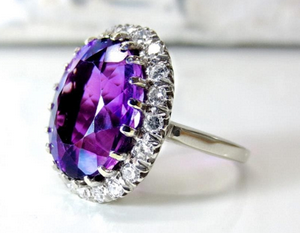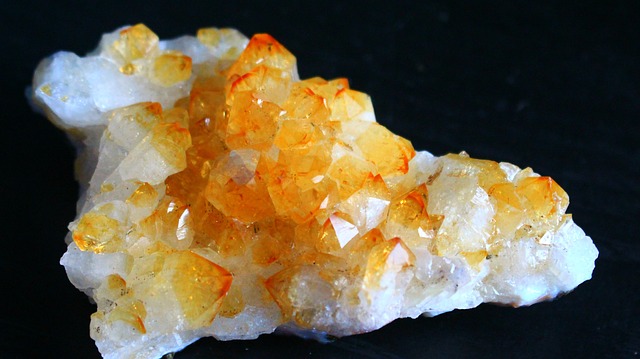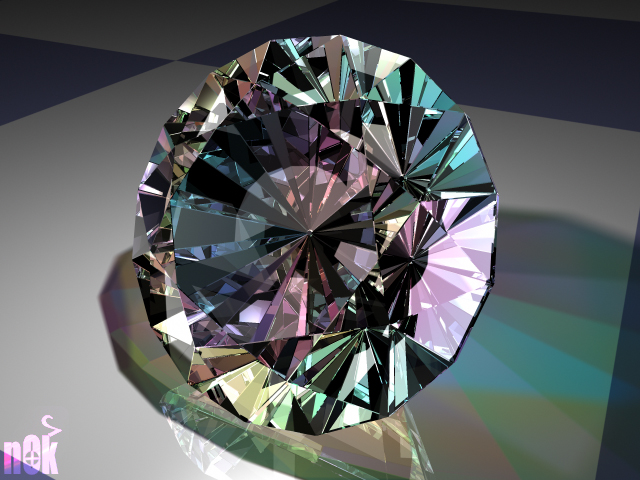 Gemstones are often considered one of the most precious possessions a person can have. Whether it’s a rare stone, a semi-precious rock or a synthetic crystal, a gemstone is always a prized asset for anyone. Although these precious minerals are incredibly popular, people still don’t know much about the crystal wonders. Generally, shoppers and jewelry aficionados buy them based on their appearance and size. However, a gemstone’s worth is more rightly assessed by its color and weight.
Gemstones are often considered one of the most precious possessions a person can have. Whether it’s a rare stone, a semi-precious rock or a synthetic crystal, a gemstone is always a prized asset for anyone. Although these precious minerals are incredibly popular, people still don’t know much about the crystal wonders. Generally, shoppers and jewelry aficionados buy them based on their appearance and size. However, a gemstone’s worth is more rightly assessed by its color and weight.
Similar to diamonds, just because a gemstone appears bigger doesn’t mean it’s more valuable than a smaller stone. You have to take into account the crystal’s chemical composition, color and weight density which can significantly impact its value. If anyone wants to be a collector or gemstone connoisseur, they need to thoroughly understand the essential features in order to ascertain an accurate worth of the stones you are interested in.
Since a lot of people don’t know the intricacies of minerals, they can easily be tricked into paying more than the fair price. To save buyers for paying a high price for a not-so-valuable gem, we put together a guide that will teach the significant aspects of gemstones.
Here is a quick yet comprehensive guide on gemstones
Gemstones are natural or synthetic stones that are formed under specific circumstances and are known for their sparkling splendor. Natural gemstones are mined from sea or earth, while synthetic ones are designed in a lab. These stones come in every possible color and shape and have different chemical consistencies.
In its raw and unrefined form, a gemstone is asymmetrical and dull, but after getting cut and polished, it becomes sharp and acquires a higher value. The actual value will depend upon a number of factors.
Types of Stones
Gemstones can be of many types based on their color, look, cut, purity level and rarity. However, two primary categories instantly distinguish a high-value crystal from a lower one: precious stones and semi-precious gemstones.
Precious gemstones
As the name suggests, a precious gem is one that’s extremely rare, expensive and doesn’t contain many impurities. Out of all the gemstones, the following four are considered the most precious.
- Diamond
- Sapphire
- Ruby
- Emerald
Semi-Precious Gemstones
Any gemstone that’s not any of the mentioned elements, it’s a semi-precious stone.
At times, these stones can be equally rare like a precious one, but they still might not be of high value because of their shape, cut, color or impurity level. Semi-precious gemstones include opal, amethyst, agate, garnet, quartz, zircon, among others.
Every gem has a distinct chemical composition that gives it a recognizable shape and appearance. However, a precious stone specimen has a sharp, universal chemical makeup, while a semi-precious gemstone can have varying chemical compositions.
Another significant difference is their color. Since refined crystals are pure in their composition, they come in primary hues only, which include violet, green, blue, red, yellow and orange. On the contrary, less-valuable gemstones can come in varying shades formulated by a combination of two or more primary hues.
These minerals can also be categorized by their place of origin. The two classifications of gems based on their site of formation are organic and mineral.
Organic Gemstones
As the name suggests, organic gemstones come from living organisms, such as plants and animals. The three primary examples of organic gems are pearl, coral and amber.
The most popular among the three organic crystals is the pearl that is formed inside an oyster. When an oyster tries to protect itself from any foreign object, it creates a tiny globule inside its shell, which is refined over time, becoming a fully formed pearl. Coral is formed from the skeletal remnants of sea creatures called coral polyps. And amber comes from the fossilized sap or resin of age-old or extinct pine trees.
Mineral Gemstones

Mineral gemstones are natural rocks that come into existence after undergoing multiple treatments of the environment they reside in; such as heat, pressure and time. Mineral gemstones include all the precious stones and are found through intensive mining.
One other way of classifying these gems is the separation of natural rocks from synthetic ones, forming two categories: natural gemstones and lab-created gemstones.
Natural Gemstones
Natural gemstones are formed in the earth or the sea by mother nature. Although they are magnificent, they need an awful lot of time to fully develop into a considerable-sized piece of gemstone.
Lab-Created Gemstones
As mentioned earlier, every stone has a unique chemical composition that can be replicated in a lab without compromising its quality. Synthetic crystals are much cheaper than their natural counterparts and do not require a lot of time to acquire their shape and form.
The Four C’s of Gemstones
When buying a gemstone, one needs to pay attention to its four Cs: color, clarity, carat, and cut. All of these aspects significantly impact their value.
-
- Color: Gemstones come in every possible color. From dark, rich shades to light milky shades, you can find every imaginable color in a wide variety.
- The color of a gemstone is assessed based on the following three qualities
- Tone: The tone is the lightness or darkness of a color.
- Saturation: This signifies the intensity or aroma level of pigmentation. Typically, pure stones have high saturation.
- Hue: Gemstones can have six primary hues; violet, green, blue, red, yellow and orange. But only precious gemstones have primary hues; all other rocks have secondary hues that are a blend of two or more primary shades.
Clarity
The clarity of a gemstone signifies how pure it is, meaning how much impurities, known as inclusions, does it contain. The higher the level of inclusion in a gem, the lower its value.
Carat
Contrary to popular belief, gemstones are sold by weight and not by size. The unit used to measure a gemstone is known as carat, which is 1/8th of a gram. Two gems of the same carat measurement can still have varying values because of their different weight densities. In other words, a rock with a higher weight density will cost more than one with a lower density of the same carat count.
Cut

How a gemstone is fashioned to reflect light determines its cut. Gems can have multiple cuts such as princess cut, cushion cut, emerald cut, Asscher cut, etc. Different cuts enhance the value of a gemstone differently; some are considered more elite and expensive than others.
Although some stones are more valuable than others, one should cherish them all. Owning a gem is a luxury in itself. Don’t let popular opinions steer your choices. Always purchase the stone that appeals to you, regardless of its general worth.
